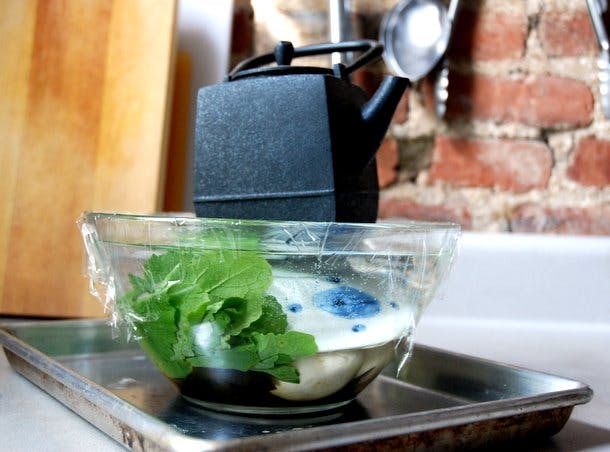
salt cured (a.k.a. pickled) turnips
Learn about the art of Japanese pickling, known as tsukemono, and explore the process of making shiozuke, a style of salt pickles. Discover the regional traditions, ingredients, and methods used to preserve and enhance the natural flavors of vegetables in Japanese cuisine.
I've been watching the chefs pickle vegetables at Matsuri, the restaurant in whose kitchen I volunteer twice a week, and thought, hey, I have to try this at home. So I did. Here's my report:
When I first heard of Japanese pickles, I thought of the pickles I was familiar with, namely, heavily vinegared dill or garlic infused Kirby cucumbers -- the stuff of Eastern European babushkas. Those pickles made sense in that part of the world because they could keep through a long, bitter winter. But for Japanese pickles, it was the wrong image.
In Japan, tsukemono -- what we translate as "pickles" -- are for the most part, lightly cured vegetables intended for quick consumption. There are many styles of Japanese pickles, which vary by ingredients, pickling agents and regional traditions. But they all enhance the very essence of the eggplants, cabbage, radishes or cucumbers being pickled -- and keep the integrity of the ingredient. Maybe "pickle" is the wrong word to use in English. How about we call them "cured vegetables," or, simply, tsukemono?
Pickled turnips are a mainstay at Matsuri, so I found beautiful turnips at the farmers market. These root vegetables -- maybe all root vegetables, save carrots -- I think are underappreciated here in America, especially turnips with their long green leaves still intact. That's too bad. Even raw they have a sweet, delicate flavor.
I decided to start with shiozuke -- salt pickles -- because that's the simplest style. In Japan I've seen people pickle at home in small plastic barrels, but I used a glass mixing bowl. I filled it with water I salted with Japanese Aranami sea salt, which is still moist with seawater in the package so it has a wonderful brininess. The water tasted salty but not overly so. (I know, not super helpful. I'll follow with proportions in later posts as I become more experienced at pickling.) I added turnips with the leaves and three two-inch lengths of konbu, which Chef Ono suggested. I held the ingredients down with a small dish, sealed the top of the bowl with film, and weighted everything with a cast iron tea pot. The idea is, of course, that the ingredients become fully immersed in the salt water so they cure. After that, I waited.
I set up my pickling contraption, which looked like something out of an episode of Weird Science, on a Wednesday. By Saturday morning the water had turned cloudy and bubbly (a little water seeped out of the bowl). On Sunday I could smell the sweet aroma of fermentation. On Monday, I pulled out the turnips and tasted them! Not as good as at Matsuri, but they were okay. I think I need to add more salt to the water next time. The turnips were sweet with a slight bite from the curing, and the konbu added a sense of umami. They also gave off that satisfying fermented fragrance (satisfying to me, at least!).
